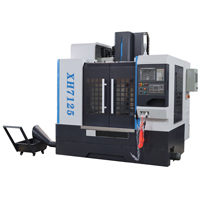Hardened steel usually refers to the workpiece material with martensitic structure after quenching, high hardness, high strength, and almost no plasticity. When the hardness of hardened steel is >55HRC, its strength sb is about 2100-2600N/mm2. Usually, the workpiece has been roughed before heat treatment and hardened, and only finishing is carried out in the hardened state. Fine grinding is the most commonly used processing technology for finishing, but its narrow processing range, large investment, low production efficiency, and easy environmental pollution have always plagued the economical and efficient processing of hardened steel. With the development of processing technology. It has become possible to replace grinding with hard turning, and has achieved obvious benefits in production. Cutting of hardened steel (55-65HRC) on lathes or turning centers using polycrystalline cubic boron nitride (PCBN) tools, ceramic tools or coated carbide tools, etc.
1. Features of Hard Turning
High processing efficiency
Hard turning has higher processing efficiency than grinding, and its energy consumption is 1/5 of that of ordinary grinding. Hard turning often adopts large cutting depth and high workpiece speed, and its metal removal rate is usually 3 to 4 times that of grinding. In turning, a variety of surface processing (such as outer circle, inner hole, and groove, etc.) can be completed in one clamping, while grinding requires multiple installations. Therefore, the auxiliary time is short and the position accuracy between the machined surfaces is high. .
Hard turning is a clean machining process
In most cases, coolant is not required for hard turning. In fact, the use of coolant can adversely affect tool life and surface quality. Because hard turning is formed by annealing and softening the material in the sheared part, if the cooling rate is too high, the effect caused by the cutting force will be reduced, thereby increasing mechanical wear and shortening tool life. At the same time, hard turning can save the device related to the coolant, reduce the production cost, simplify the production system, and the formed chips are clean and easy to recycle.
Less investment in equipment, suitable for flexible production requirements
When the productivity is the same, the investment of the lathe is 1/3 to 1/2 of the grinding machine, and the cost of the auxiliary system is also low. For small batch production, hard turning does not require special equipment, while large batch processing of high-precision parts requires CNC machine tools with good rigidity, high positioning accuracy and repeatable positioning accuracy.
The lathe itself is a flexible machining method with a wide range of processing. The turning and clamping are fast. It is easy to realize the machining conversion between two different workpieces with a modern CNC lathe equipped with a variety of tool turntables or tool magazines. Hard turning is especially suitable for this. class processing. Therefore, compared with grinding, hard turning can better meet the requirements of flexible production.
Hard turning allows parts to achieve good overall machining accuracy
Most of the heat produced in hard turning is taken away by the chips, and there will be no surface burns and cracks like grinding, with excellent machined surface quality, accurate machining roundness, and a high position between machined surfaces. precision .
2. ANTISHI Hard Turning Technology Improvement
There are mainly the following aspects:
(1) Manufacturers and operators understand the effect of hard turning
(2) The problem of tool cost. The initial tool cost of hard turning is more expensive than ordinary cemented carbide (for example, CBN is more than 10 times more expensive than ordinary cemented carbide), but the cost allocated to each part is lower than that of grinding, and the effect is better than ordinary hard alloy. Alloys are much better;
(3) Research on the machining mechanism of hard turning
(4) In addition to in-depth research on the mechanism of hard turning, the training of hard turning processing knowledge, successful experience demonstrations and strict operating specifications are strengthened to make this efficient and clean processing method more applicable to production practice. If hard turning and fine grinding are combined, the cost of machining a typical part will be 40% to 60% lower than the cost of roughing and finishing on a grinder.



